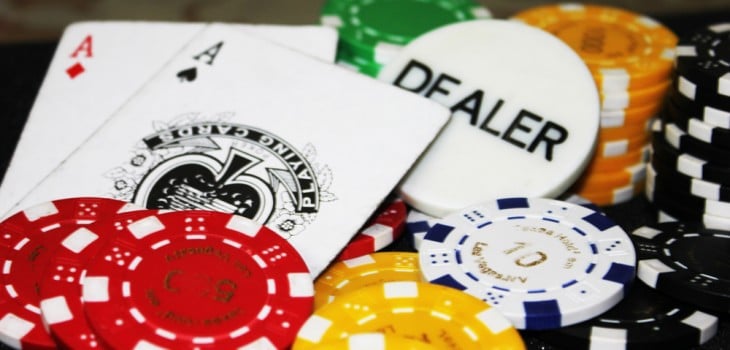The Perfect Bet: How Science and Maths are Taking the Luck Out of Gambling
London School of Hygiene & Tropical Medicine https://lshtm.ac.uk/themes/custom/lshtm/images/lshtm-logo-black.png Friday 29 April 2016
Throughout history, gamblers have turned to science in their search for profitable betting strategies. But gambling has also had a huge impact on scientific research, shaping everything from probability to game theory, and chaos theory to artificial intelligence.
Many of the techniques that I use in my work originated with games of chance. For example, to simulate disease transmission, I use “Monte Carlo” methods, which were first developed to study card games. To assess whether patterns in data might be a co-incidence, I employ statistical techniques honed on roulette. And almost every day, I use probability concepts that emerged in the gambling rooms of Renaissance Italy.
The Perfect Bet explores the long, tangled history of betting and science, explains why gambling continues to generate insights into luck and decision-making today.
***
During the summer of 1892, Karl Pearson spent his holiday flipping coins. By the time the break was over, the mathematician had flipped a shilling twenty-five thousand times, diligently recording the results of each throw. Most of the work was done outside, which Pearson said ‘gave me, I have little doubt, a bad reputation in the neighbourhood where I was staying’. As well as experimenting with shillings, Pearson got a colleague to flip a penny more than eight thousand times and repeatedly pull raffle tickets from a bag.
To understand randomness, Pearson believed it was important to collect as much data as possible. As he put it, we have ‘no absolute knowledge of natural phenomena,’ just ‘knowledge of our sensations’. And Pearson didn’t stop at coin tosses and raffle draws. In search of more data, he turned his attention to the roulette tables of Monte Carlo.
Pearson was something of a polymath. In addition to his interest in chance, he wrote plays and poetry and studied physics and philosophy. English by birth, Pearson had travelled widely. He was particularly keen on German culture: when University of Heidelberg admin staff accidentally recorded his name as Karl instead of Carl, he kept the new spelling.
Unfortunately, his planned trip to Monte Carlo did not look so promising. He knew it would be near impossible to obtain funding for a ‘research visit’ to the casinos of the French Riviera. But perhaps he didn’t need to watch the tables. It turned out that the newspaper Le Monaco published a record of roulette outcomes every week. Pearson decided to focus on results from a four-week period. First he looked at the proportions of red and black outcomes. If a roulette wheel were spun an infinite number of times—and the zeros were ignored—he would have expected the overall ratio of red to black to approach 50/50.
Out of the sixteen thousand or so spins published by Le Monaco, 50.15 per cent came up red. To work out whether the difference was down to chance, Pearson calculated the amount the observed spins deviated from 50 percent. Then he compared this with the variation that would be expected if the wheels were random. He found that a 0.15 per cent difference wasn’t particularly unusual, and it certainly didn’t give him a reason to doubt the randomness of the wheels.
Red and black might have come up a similar number of times, but Pearson wanted to test other things too. Next, he looked at how often the same colour came up several times in a row. When he compared the length of runs of different colours with the frequencies that he’d expect if the wheels were random, something looked wrong. Runs of two or three of the same colour were scarcer than they should have been. And runs of a single colour—say, a black sandwiched between two reds—were far too common. Pearson calculated the probability of observing an outcome at least as extreme as this one, assuming that the roulette wheel was truly random. This probability, which he dubbed the p value, was tiny. So small, in fact, that Pearson said that even if he’d been watching the Monte Carlo tables since the start of Earth’s history, he would not have expected to see a result that extreme. He believed it was conclusive evidence that roulette was not a game of chance.
The discovery infuriated him. He’d hoped that roulette wheels would be a good source of random data and was angry that his giant casino-shaped laboratory was generating unreliable results. ‘The man of science may proudly predict the results of tossing halfpence,’ he said, ‘but the Monte Carlo roulette confounds his theories and mocks at his laws.’ With the roulette wheels clearly of little use to his research, Pearson suggested that the casinos be closed down and their assets donated to science. However, it later emerged that Pearson’s odd results weren’t really due to faulty wheels. Although Le Monaco paid reporters to watch the roulette tables and record the outcomes, the reporters had decided it was easier just to make up the numbers.
Extract from: The Perfect Bet: How Science and Maths Are Taking the Luck Out of Gambling by Adam Kucharski (Profile Books, 2016).
Image: Poker Cards Dealer Credit: pdpics.com
Our postgraduate taught courses provide health practitioners, clinicians, policy-makers, scientists and recent graduates with a world-class qualification in public and global health.
If you are coming to LSHTM to study a distance learning programme (PG Cert, PG Dip, MSc or individual modules) starting in 2024, you may be eligible for a 5% discount on your tuition fees.
These fee reduction schemes are available for a limited time only.